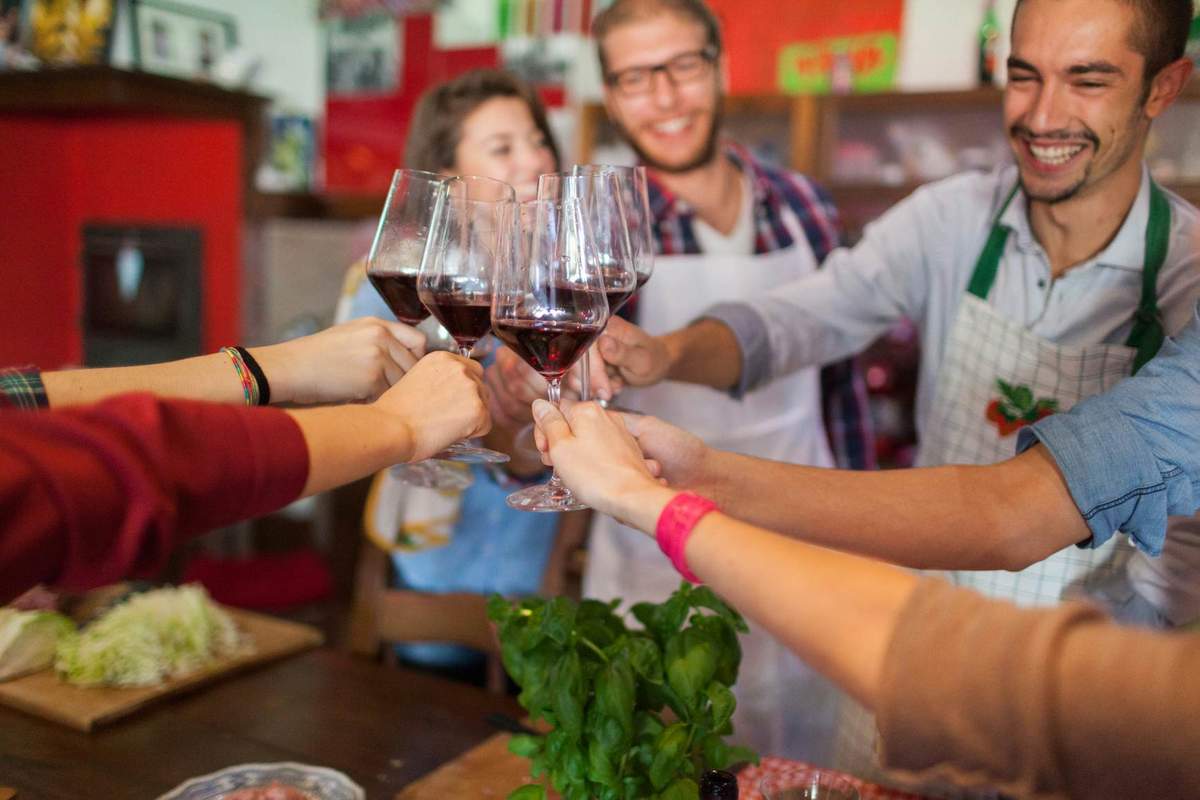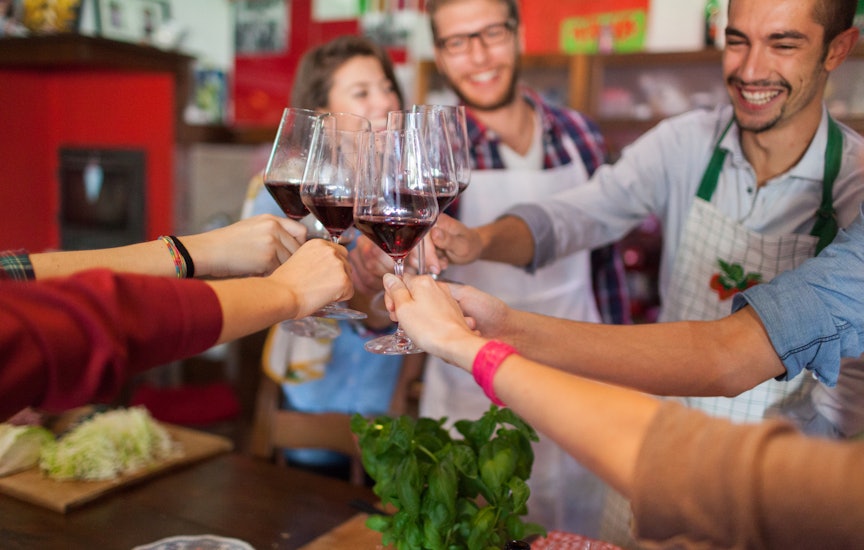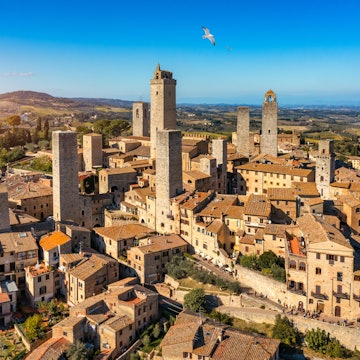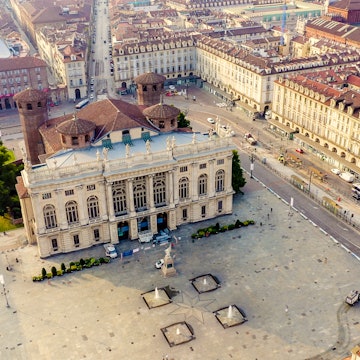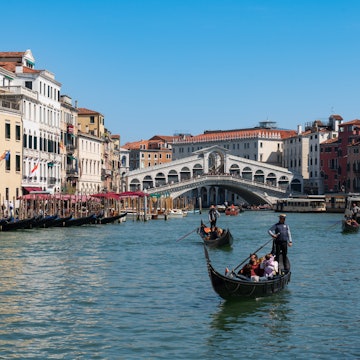
The best time to go to Italy: plan your trip with our seasonal guide

Dec 3, 2024 • 7 min read
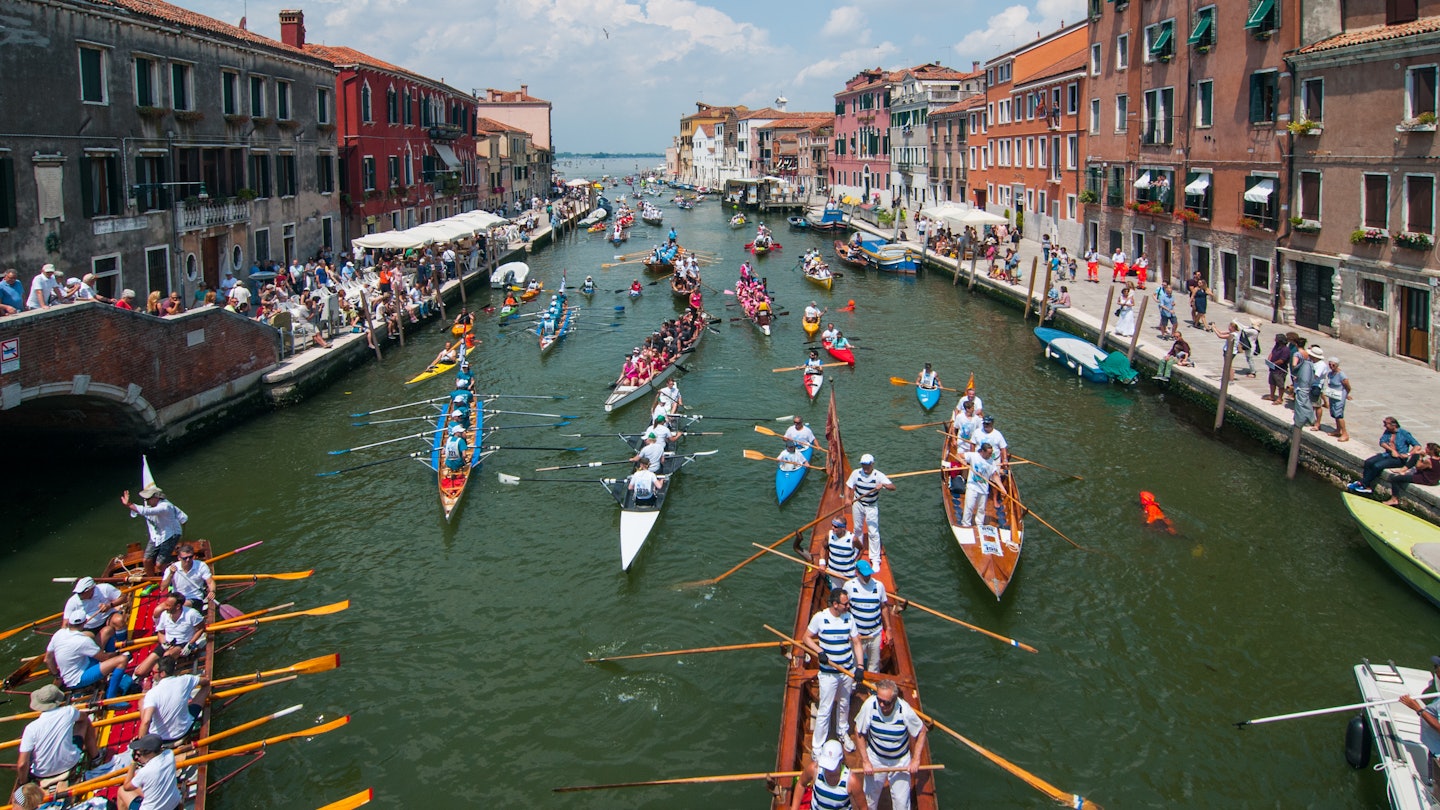
Choose the best time for your visit to Italy with this guide to seasons and events. Simone Padovani/Shutterstock
Home to many of the world's greatest works of art, architecture and gastronomy, Italy elates, inspires and moves like no other.
Italy has more UNESCO World Heritage cultural sites than any other country. Should you walk in the footsteps of ancient Romans in Pompeii, revel in Ravenna's glittering Byzantine treasures or get breathless over Giotto's revolutionary frescoes in Padua? It's a cultural conundrum as thrilling as it is overwhelming with many wonderful things to see and do.
But another consideration is the best time to visit the country. Do you go in summer when the sun is high but so are the prices, or do you wait until low season for cheaper rates, but run the risk of many attractions not being open?
Plan the perfect time for your visit to Italy with this seasonal guide to weather, crowds, prices and events throughout the year.

April to June offers the best weather
Often considered the best time to visit, spring offers the ideal mix of good climate and manageable tourism flows. Nature blooms as the snow melts in the mountains and the rolling hills of the central Italian countryside come to life after the chilly winter.
While April is typically unpredictable when it comes to weather – pack both sunscreen and a raincoat – May and June offer mostly clear, sunny skies without the scorching temperatures of July and August. As the summer approaches, both Italian and European tourists try to make good use of their weekends, meaning that lines are to be expected in major museums. Weekdays, however, are a great opportunity to explore sights without the crowds.
Late spring is perhaps the best time of the year to enjoy the great outdoors. Deals on accommodations are easily found in rural areas, beaches are often empty, and nature reserves offer a peaceful retreat from the city buzz.
Many Italian regions – Abruzzo, Umbria and Sardinia, for instance – have been investing in sustainable tourism infrastructure in recent years, building new cycling routes and hiking itineraries that offer the chance to admire spectacular scenery at a slow pace.
It is worth keeping an eye out for the Giornate FAI di Primavera (FAI Spring Days), a two-day event happening all around the country during which the National Trust for Italy (Fondo Ambiente Italiano) opens the doors of hundreds of heritage buildings that are not usually accessible to the public – free of charge.
Held annually in Milan in April, the world's most prestigious furniture fair, Salone Internazionale del Mobile, is held at Fiera Milano, with satellite exhibitions in Zona Tortona. Running alongside it is the Fuorisalone, serving up design-related exhibits, events and parties across the city.
Labour Day (May 1) leads the way into the sunny season with Rome’s Concerto del Primo Maggio, one of Europe’s largest free music festivals. Streets and piazza fill up at aperitivo hour, while the southern coasts offer the chance for a crowd-free dip into the Mediterranean. Europe’s premier arts showcase, La Biennale di Venezia, is actually held annually, though the spotlight alternates between art (odd-numbered years) and architecture (even-numbered years). Running alongside the two main events are annual showcases of dance, theater, cinema and music.

Beaches are packed in July and August, and costs go up
Traveling to Italy between late June and early September means facing the peak holiday season, with all the pros and cons that this entails. The great majority of Italians take time off work in either July or August, moving from the cities to the coast en masse to make the most of the sunshine. Prices soar along with temperatures during this time – if you are planning to travel to popular destinations during summer months, book accommodation well in advance and be prepared to pay significantly higher prices than the rest of the year.
Most festivals – both music and historic reenactments – take place during summer months. The Venice Film Festival is one of the world's most prestigious silver-screen events. Held at the Lido from late August to early September, it draws the international film glitterati with its red-carpet premieres and paparazzi glamor.
The heat is not to be taken lightly, especially if you choose to visit cities and the southern regions where temperatures regularly go beyond 35°C (95°F) in July and August. According to the Institute of Atmospheric and Climate Sciences (ISAC), 2022 was the hottest year since 1800, when temperature recordings began. Even in low altitude areas, outdoor activities such as hiking and cycling can be a challenge due to the heat.

September to November is all about wine, olive oil and truffles
The second shoulder season (after spring) is the season of wine, of food festivals, of forests turning golden and locals returning to their daily routines after the holidays. In recent years the weather has been exceptionally warm well into November – in the southern regions it is not uncommon to see people swimming days before the beginning of winter.
The changing scenery of autumn and the cooling temperatures make for great road trips in the countryside, especially if you value tasting some of the seasonal, mouthwatering delicacies the country has to offer. As summer comes to an end, wineries are busy harvesting grapes and in October olio novello – freshly bottled, intensely flavorful extra virgin olive oil obtained from the first olives picked in the new season – begins appearing on kitchen tables.
Nature turns red in many of the forests that cover the lower Apennines, offering a great opportunity for hikers and photographers to observe the changing scenery. Porcini mushrooms, chestnuts, pumpkins and highly prized truffles are just some of the many ingredients populating the menus of hundreds of local sagre (food festivals) taking place between September and December.
The UNESCO-listed city of Mantova hosts Festivaletteratura, one of Italy’s most important literary festivals, in September – spread in various locations of its historic city center where Italian and international authors hold talks and presentations.
Europe’s largest comics festival happens in the Tuscan city of Lucca each year in October, attracting half a million visitors, including many cosplayers. The Piedmontese town of Alba hosts Italy’s most important truffle festival, the Fiera Internazionale del Tartufo Bianco di Alba, in October, November and December.

December to March means snow sports and good deals
Parts of Italy – especially coastal destinations – seem to go into hibernation during winter months, but the coldest season of the year affects each region differently.
Late December to March is high season in the Alps, where snow-covered slopes attract skiers from all over Europe. Italy's top ski resorts are in the northern Alps and the Dolomites, but you'll also find resorts in Friuli, the Apennines, Le Marche and even Sicily.
All major cities light up with Christmas decorations starting as early as November and Christmas markets, with live music, ice skating and stalls selling roasted chestnuts, mulled wine and other seasonal treats, take place throughout December in many public squares.
The two weeks running from Christmas Eve to the Epiphany (January 6) coincide with school holidays and are for many Italians working far from their families an opportunity to return home. Many cities organize New Year's celebrations with open-air concerts and fireworks. Traveling during this time can get expensive.
Venice celebrates Epiphany on January 6 with the Regata della Befana (Regatta of the Witches), complete with a fleet of brawny men dressed in their finest befana (witch) drag. Then in the period leading up to Ash Wednesday, many Italian towns stage pre-Lenten carnivals with whimsical costumes, confetti and festive treats. Venice's Carnevale is the most famous, while Viareggio's version is well known for its giant papier-mâché floats. This is a great chance for kids to experience historic destinations with a magical atmosphere.
Outside of the holidays, winter months offer the chance to travel at much lower prices than the rest of the year. It is fairly easy to find deals on accommodations and many major museums such as the Uffizi in Florence offer low-season discounts on tickets.
The weather in March is capricious – sunny, rainy and windy all at once – but temperatures typically get warmer. As winter turns into spring nature blooms coloring the countryside. The bright yellow mimosa flower, a symbol of International Womens’ Day, on March 8, dominates the scene. The Bergamo Jazz Festival inaugurates the arrival of spring with experimental sounds produced by local and international artists.





